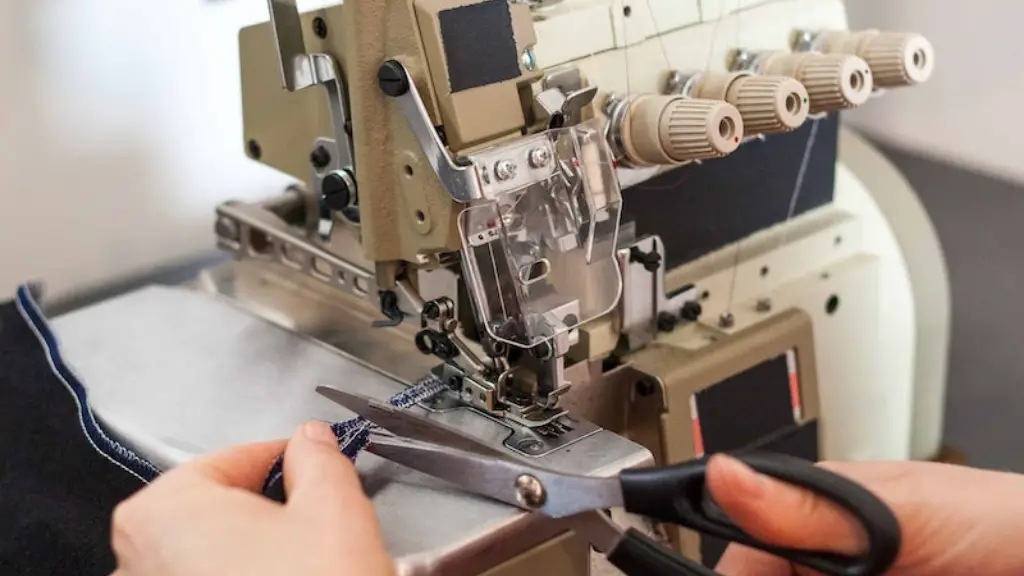Type of Sewing Machines
Choosing the right sewing machine for home use requires taking several factors into consideration. Before making a purchase, it is important to know the different types of machines and what they are capable of doing. Sewing machines come in three basic types: mechanical, electronic, and computerised. Mechanical machines are traditional, entry-level machines that are generally easier to operate. They do not offer a wide range of features or stitch types, but may be sufficient for basic sewing projects. Electronic machines are slightly more complicated, but offer more features and stitch types than the mechanical machines. Sewers can easily select stitches and settings, yet designs and adjustments must be made manually. Computerised sewing machines are the most advanced option, with programmable stitch patterns, automatic threading systems, and touchscreen displays.
Price Range
The price range of sewing machines varies significantly, depending on the type and quality of machine you wish to purchase. Most entry-level mechanical sewing machines can be purchased for under $100. Electronic and computerised machines tend to cost significantly more, with some models running well into the thousands. However, for most basic home sewing projects, a quality electronic machine with features like automatic threading, adjustable stitch width and length, and free arm capability should adequately meet your needs.
Brand Quality and Availability
When buying a sewing machine for home use, it is important to look for brands with a track record of quality and reliability. Since any machine, regardless of type, is an investment, doing some research beforehand can help ensure you buy a reliable model. Some of the most frequently cited brands for home use are Brother, Singer, and Janome, with many online and in-store retailers carrying these models. Additionally, there are many specialized and boutique stores that carry specialized models, such as quilting machines, embroidery machines, and industrial sewing machines.
Maintenance and Upgradeability
The maintenance and upgradeability of a sewing machine are also important factors to consider. Generally, mechanical machines will require more maintenance than electronic or computerised models, as they tend to have more moving parts and require more frequent cleaning and upkeep. Additionally, many computerised machines have advanced features and stitching capabilities that can be further upgraded with additional software and components. When buying a machine for home use, it is important to consider whether it may need to be upgraded or maintained in the future.
Additional Accessories and Tools
In addition to the sewing machine itself, there are many tools, accessories, and attachments that can make using and maintaining a machine more convenient and efficient. Items such as needle and thread sets, seam rippers, bobbins, buttons, and zippers can come in handy when working on projects at home. Additionally, a machine typically comes with its own accessories, such as an instructional manual, needle threader, and foot pedal.
Technical Capabilities
When looking for a sewing machine for home use, it is necessary to assess the machine’s technical capabilities in terms of speed, strength, and stitch types. Different types of machines will have varying speed and strength levels, with some machines capable of producing decorations such as quilting and embroidery, while others will be limited to basic stitching. Additionally, it is important to consider the type and size of needles that the machine is compatible with, as this will have a direct impact on the type and size of projects that can be undertaken.
User Reviews and Expert Advice
Finally, but just as importantly, take the time to read reviews and consult with experts before making a purchase. User reviews are a great way to get an unbiased opinion of the machine you are considering, and experts can provide valuable advice on technical considerations and provide tips on specific models. Additionally, many online and physical retail outlets offer sewing classes that can help first-time buyers learn the basics of using a machine.
Operating System
When looking for a sewing machine for home use, you may want to investigate the various operating systems that will be compatible with the machine you are considering. Popular home operating systems for sewing machines are Windows and Mac OS, so it is important to check that the machine you are looking at is compatible with the system you intend to use. Additionally, some machines come with their own software, which can be used to access extra features and functions.
Software Compatibility
Software compatibility is also an important consideration when selecting a sewing machine. Many machines now come preloaded with software that is compatible with third-party applications, such as Adobe Illustrator, CorelDRAW, and Creative Studio. For those who plan to do more advanced work that requires specialized programs, such as machine embroidery, quilting, or digitizing, check the machine’s specifications to ensure it is compatible.
User-Friendliness
Choosing a sewing machine for home use means finding one that is both user-friendly and easy to operate. Reliability and sturdiness should also be taken into account, as these machines can be subjected to heavy use over time. If possible, try out a range of models and read user reviews before making a purchase.
Warranty and Service Options
Before committing to a sewing machine, consider its warranty and service options. Many manufacturers offer extended warranties along with purchase, as well as service options where technicians will come to you to repair or maintain the machine. Read through the warranty and any additional terms and conditions to determine what type of coverage you will receive.


